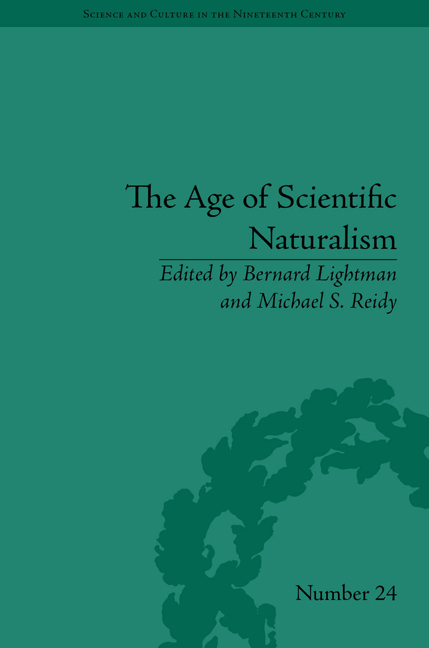Book contents
- Frontmatter
- CONTENTS
- Dedication
- Acknowledgements
- List of Contributors
- List of Figures
- Introduction: John Tyndall, Scientific Naturalism and Modes of Communication
- Part I John Tyndall
- Part II Scientific Naturalism
- Part III Communicating Science
- 8 Corresponding Naturalists
- 9 Tyndall and Stokes: Correspondence, Referee Reports and the Physical Sciences in Victorian Britain
- 10 Science at the Metaphysical Society: Defining Knowledge in the 1870s
- Notes
- Index
8 - Corresponding Naturalists
from Part III - Communicating Science
- Frontmatter
- CONTENTS
- Dedication
- Acknowledgements
- List of Contributors
- List of Figures
- Introduction: John Tyndall, Scientific Naturalism and Modes of Communication
- Part I John Tyndall
- Part II Scientific Naturalism
- Part III Communicating Science
- 8 Corresponding Naturalists
- 9 Tyndall and Stokes: Correspondence, Referee Reports and the Physical Sciences in Victorian Britain
- 10 Science at the Metaphysical Society: Defining Knowledge in the 1870s
- Notes
- Index
Summary
Correspondence has always played an important role in the historian's search for documentary resources. It is hardly necessary to say that letters can take us into the inner life of individuals, opening up the world of the past as it was experienced, revealing personal feelings and the practical details of daily existence as well as the structures of the society in which the letter-writers lived. Samuel Johnson told Mrs Thrale, ‘In a man's letters, you know madam, his soul lies naked’. The immediacy – the nakedness ’ of personal correspondence makes it a distinctive genre that is frequently drawn upon in biographical writing and in social historical accounts that explore individual experiences. In many ways letters stand as proxies for the person himself or herself; and through letters we can catch echoes of the writers' voices. Literary scholars have known this for many decades. So too have historians of science. Such documents are often moving records of friendship, collegiality, influence, concern and personal support; and supply valuable insights into the careers and minds of scientists and other actors in the past. Without these documents, our interpretations of the work, impact and stature of significant figures would be much the poorer.
Increasingly, however, the personal is giving way to the meta-historical. The physical medium of correspondence is coming to be perceived as a useful way to explore the structure of science. Handwritten letters comprised one of the leading communication ‘technologies’ available to natural philosophers in former centuries.
- Type
- Chapter
- Information
- The Age of Scientific NaturalismTyndall and his Contemporaries, pp. 157 - 170Publisher: Pickering & ChattoFirst published in: 2014



